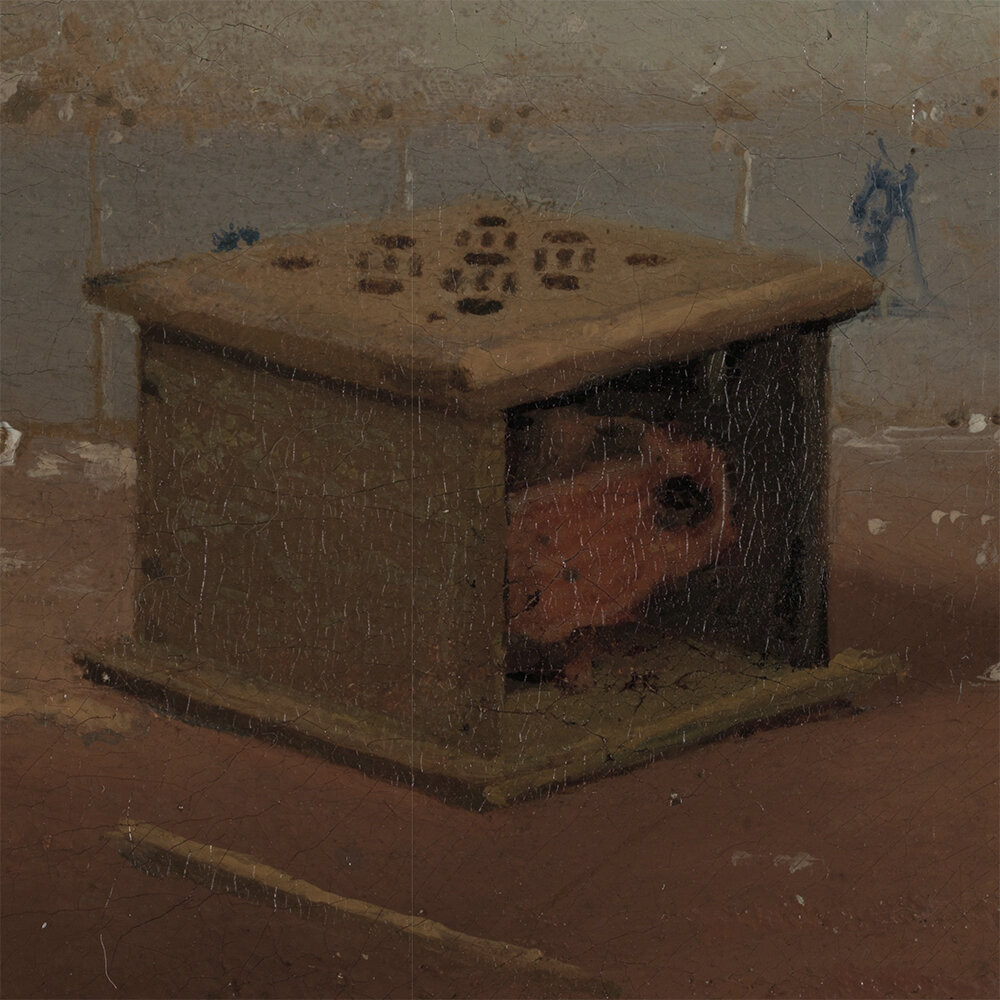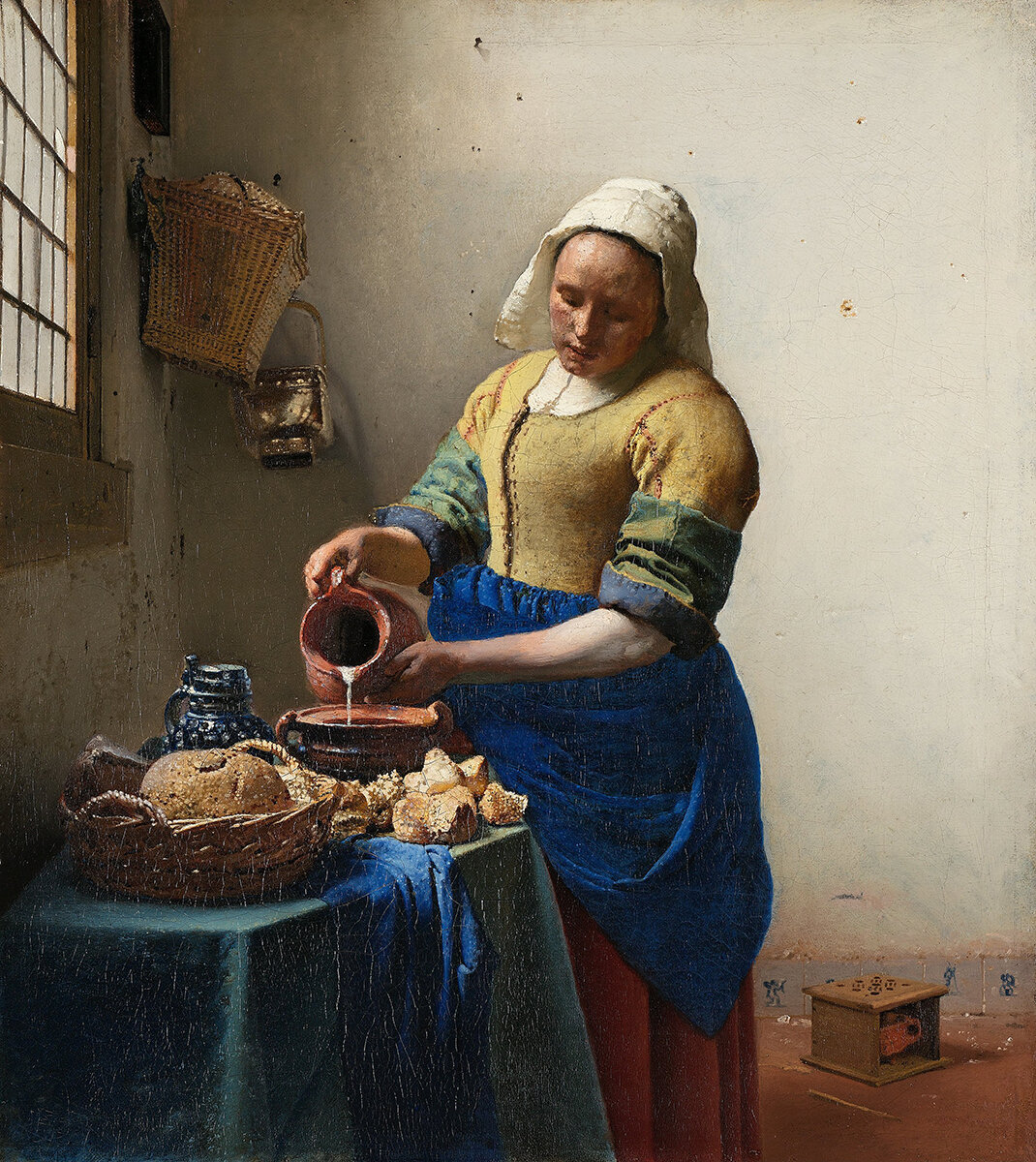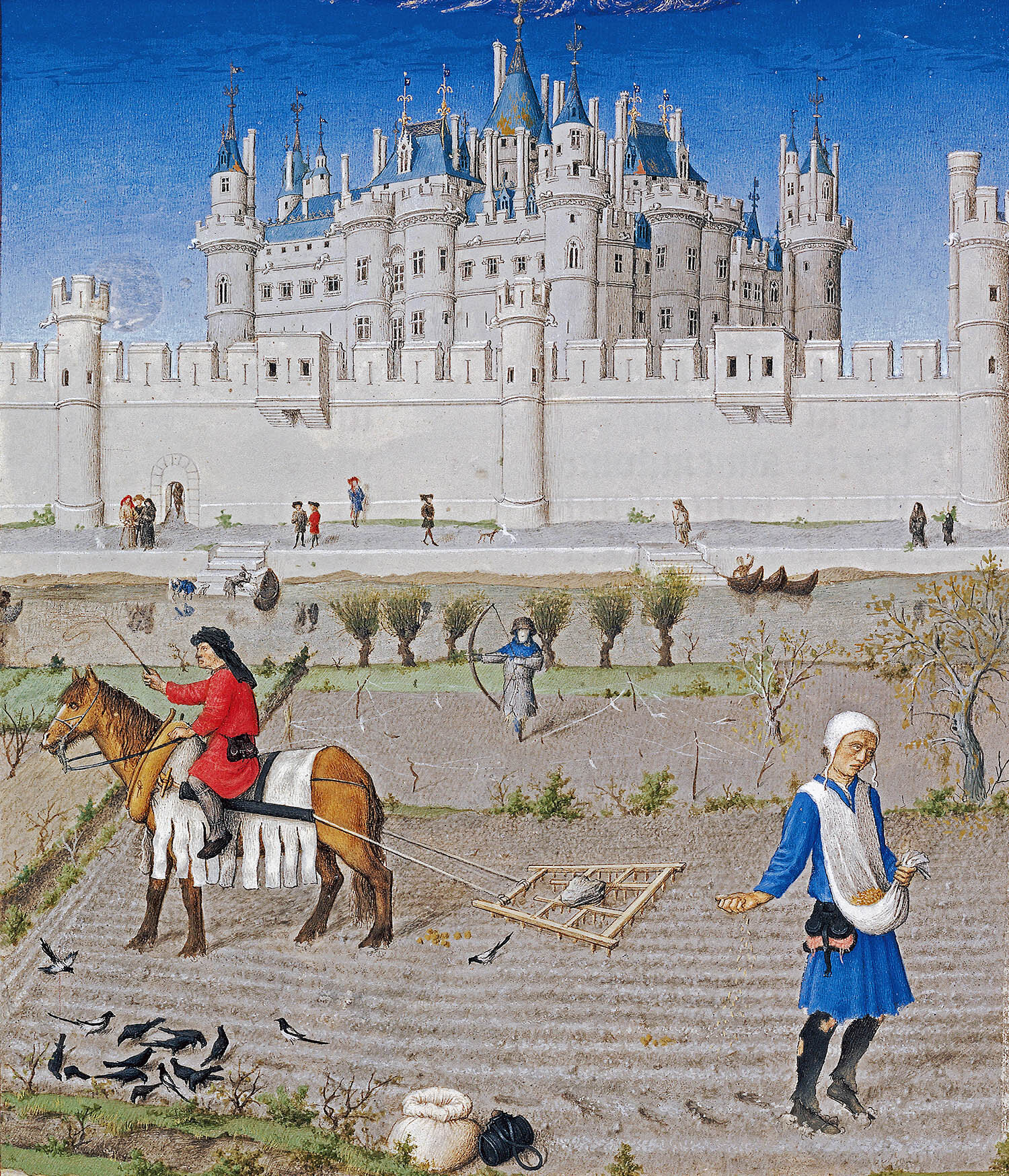The Gendered Domestic Work of Johannes Vermeer

Vermeer captures the domestic and emotional work of maids in the Dutch Golden Age.
Cover photo: The Milkmaid, oil on canvas, by Johannes Vermeer (circa 1657-1658). Via Wikipedia.
The Art of Labor
At the height of the Industrial Revolution in the United States, American workers — including children — suffered twelve hour work days and seven day work weeks. Labor Day originated in 1882 as an annual mass rally in New York organized by socialists and leftist organizations to demand shorter hours, higher pay, safer working conditions, and a labor holiday. President Grover Cleveland would declare Labor Day a federal holiday in 1894.
COVID-19 has revealed who are the essential workers and who performs the unnecessary “bullshit jobs”. This once-in-a-century pandemic has also demonstrated the global interdependency of resources, labor, and supply chains — what we commonly refer to as globalization.
Millions of Americans have lost their jobs, and likely their healthcare. This has inspired me to create a new series on the art of labor through the centuries, with a focus on how work has been valued and represented.
The Dutch East India Company and Delftware
Scholars Jan de Vries and Ad van der Woude define the early Dutch Republic as “the first modern economy” due to high pre-industrial productivity and high demand for labor. In the 17th century, an unprecedented 60% of the Dutch population lived in cities. Delft was the fifth largest city of the Dutch Republic with an estimated population of 20,000.
Founded in 1602, the Vereenigde Oost-Indische Compagnie (VOC) — the United East India Company — was “the [world’s] first multinational corporation” as well as the “first public company to issue negotiable shares”. This would be the dawn of globalization, colonialism, and capitalism.
Industrial Workers in late 17th century Dutch Republic
The creation of porcelain dated as far back as the Tang dynasty (618-907). According to UNESCO, during the Yuan Dynasty (1279-1368), Jingdezhen became the “Capital of Porcelain” which produced the blue and white ceramics purchased by the Dutch. In their journals, VOC administrators often referred to the Chinese style as “fine and curious” as well as exotic.
Chinese porcelain became incredibly popular. Between 1604 and 1657, the VOC imported over three million pieces into the Dutch Republic, which had a population of just two million inhabitants. Yet there was not enough to satisfy demand.
After a political crisis interrupted the supply of Chinese porcelain, in the 1620s, the Dutch industry began to produce affordable imitations. Delft was a major center for the Dutch East India Company, which meant Delft potters had access to a wealth of Chinese imports to imitate. During the market’s peak, over 30 potteries existed in the city.
Domestic creations were not copies or forgeries but “translations” that were admired “as attractive works of art in their own right,” argued Clare Le Corbeiller, a curator at the Metropolitan Museum of Art. The Dutch succeeded in a total domestication of the ware.
“By the late seventeenth and early eighteenth centuries, as delftware more completely distanced itself from its Chinese models, the medium no longer stood as a substitute for the Chinese original but became a new and independent commodity, one that was capable of displaying the artistry and technical sophistication of Dutch, as opposed to Chinese, craftsman,” writes Associate Professor of Art History, Dawn Odell.
Domesticity
Vermeer had dreams of becoming a history painter — considered the most esteemed painting tradition — but instead found success in depicting domestic scenes by the mid-1650s. The English word domestic originates from the Latin domesticus which means “belonging to the house”.
Vermeer was born in Delft, and he died in Delft. Despite only leaving the city once for a trip to Amsterdam, Vermeer depicted carpets from Turkey, earthenware from Germany, and porcelain from China.
In his painting The Milkmaid — one of his early domestic scenes — Vermeer truly captures the theme of domestication: of work, passion, nature, and the foreign. At the height of the Dutch Republic’s naval power, Vermeer portrays a humble maidservant, relegated to domestic work, amidst international imports.
The maid is the focal point of the canvas, as she pours milk in the kitchen, completely alone. Cultural anthropologist and researcher Irene Cieraad writes, “the rise to global power of [the] small maritime nation” resulted in a “huge absentee labor force of young men risking their lives at sea and leaving their wives behind for most of the year.”
Paintings created during the Dutch Golden Age thus observed a “clear separation of spheres between publicly active and therefore absent male bread-winners and static home-bound housewives,” as well as working maidservants, that established “seventeenth-century Holland as the cradle of female domesticity,” Cieraad continues.
Curator at the Rijkmuseum, Friso Lammertse, notes that Vermeer’s figures “seem to suggest a balance between humankind and its surroundings.” The woman stands in a modest kitchen, with sparse furnishings, against a bare wall. In the lower right corner of the canvas, lining the edge of the floor is a series of delftware tiles featuring Cupid from Greek mythology.
“[T]he qualities of durability and cleanliness, which had made Chinese porcelain tableware so appealing to Dutch housekeepers, are also the qualities that made tile pictures attractive as an element of interior decoration for consumers across Europe. Tiles pictures were especially well suited to the heat and humidity of kitchens,” writes Odell. Cupid was a popular Dutch motif and was depicted on tiles in a variety of poses.
In painting, Cupid was often employed as a symbol of “unrequited love or lovesickness”. The tiles flank a foot stove. As writes professor of art history H. Perry Chapman, “Hot and under women’s skirts, signaling their erotic desires and availability, [the foot warmer] had been a feature of Dutch love imagery since at least the early 1630s.”
The pairing of Cupid and foot warmers would have prompted Dutch viewers to think of lust. The combination was almost always presented with a humorous twist. Leiden born artist Jan Steen included a couple of dogs copulating just outside the doorway in his work The Lovesick Maiden, completed around 1660.
Vermeer, instead, subverts expectations and departs from the traditional Dutch genre of kitchen maid painting. Rather than a sexual love, Vermeer celebrates a platonic love of human warmth and nourishment. The maid is strong and matronly, not dainty or promiscuous. She is modestly dressed, covered from head to toe. Only her face, forearms, and hands are exposed.
Though Vermeer depicted women far more often than men (42 - 13), the singular focus on a maid is a rarity in Dutch painting. Vermeer does not depict a stereotype of a vixen, but a real woman in work, albeit still idealized.
The maid appears pensive, lost in thought, intently focused on her task as hand; she pours a steady trickle of cow’s milk into a bowl. The presence of pieces of bread on the table suggest she is preparing bread pudding. Despite the action, Vermeer captures a remarkable stillness.
Observes writer Raquel Laneri, Vermeer captures “a tactile, visceral quality” which enables the viewer to “taste the creamy milk escaping the jug, feel the cold dampness of the room and the starchy linen of the maid’s white cap”.
Theory of Mind
While the exact inventor of the first telescope is unknown, Dutch eyeglass maker Hans Lippershey was the first to file a patent for the device in 1608. Views from the new invention supported the heliocentric model of the solar system, proposed by Polish astronomer Nicolaus Copernicus a century prior. Professor of astronomy Owen Gingerich wrote in his 1993 book Eye of Heaven, “theological dogma considered geocentrism as the very foundation of the special relationship between God and man.”
As states physics professor André Goddu, heliocentrism “challenged standard interpretations of the Bible and conceptions reinforced by traditional religion about the place of humankind in the universe and its ultimate end.” Advances in science, coupled with the Catholic Church’s use of indulgences and corruption, as well as lingering anger over the Black Death, resulted in the Protestant Reformation, set in motion by the German priest Martin Luther in 1517.
Vermeer, himself likely converted from Protestantism to Catholicism at the behest of his soon-to-be mother-in-law prior to his marriage to Catharina Bolnes in 1653. While the practice of Catholicism was illegal in the Dutch Republic, it is estimated that as many as a third of inhabitants maintained the faith. Professor of art history, David Smith asserts Vermeer “held some continuity in his mind between science and theology” as the views bled into one another throughout his body of work.
In 1637, amidst the ensuing Scientific Revolution, French philosopher and mathematician, René Descartes wrote his famous dictum, “I think, therefore I am”. According to Descartes, the only thing man could truly be certain of is his own existence.
“The paintings of Vermeer share this self-possession, this self-containment, with the meditations of Descartes and share with him credit for constituting the human being as a center of consciousness. Credit to [Vermeer’s] paintings alone is due for teaching their viewers that the silence that attends them is a sign of recognition that there are other minds than ours,” concludes philosophy professor Mary Bittner Wiseman. Such an understanding is referred to today as theory of mind.
Theory of mind is the “reflexive appreciation of others’ intentions, emotions, and perspectives” which is an evolved skill of empathy that allows animals — including humans — to establish “enduring social bonds, which in turn enhance reproductive success,” argue researchers Robert Seyfarth and Dorothy Cheney. The concept of “theory of mind” was coined by David Premack and Guy Woodruff in their 1978 study of chimpanzees. According to the pair, “An individual has a theory of mind if he imputes mental states to himself and others.”
“In a way, we, as the audience, arrive at the idea of human autonomy by submitting our own autonomy to the dominion of the intentions of the artist,” observes philosophy professor Uygar Abaci in The Journal of Aesthetics and Art Criticism.
A developed theory of mind is the foundation of all emotional labor, the counterpart to physical labor, as it creates the understanding of the needs and expectations of others. Sociologist Arlie Hochschild, who originally coined the term in 1983, defines emotional labor as “the work, for which you’re paid, which centrally involves trying to feel the right feeling for the job.”
Service
Maidservants played an integral role in the home, performing “grueling, dirty, and skilled” labor. Just an estimated 10% of Dutch homes had servants; the majority of which had only one. Servants would act as wet nurse, cook, and cleaner. The Milkmaid is an imprecise title for Vermeer’s painting as the woman portrayed is almost certainly a general maidservant.
Diane Wolfthal acknowledges that art historians often overlook servants because the “discipline [of art history] is closely tied to the art market and to wealthy donors, and as a result has long identified with the elite.” However, Wolfthal writes, “servants differ from others of low status, such as peasants and beggars, in their intimate long-term contact with the elite.”
The respect paid to maidservants varied by family. Contemporary accounts record that some employers treated staff harshly while others considered them as members of the family. Servants would have a dedicated chamber in the home, and some even dined with masters and their children.
Vermeer would have likely held great admiration for his own family’s maid, Tanneke Everpoel, who allegedly defended both his wife and mother-in-law from multiple attacks by Vermeer’s — possibly mentally ill — brother-in-law Willem Bolnes.
According to depositions recorded in 1666, Tanneke Everpoel testified against Willem on behalf of Vermeer’s wife, Catharina, claiming Willem had threatened “to beat [Catharina] on diverse occasions with a stick, notwithstanding she was pregnant to the last degree” and “that this would have happened had [Everpoel] not prevented it.”
Everpoel also explained that, Vermeer’s mother-in-law, “Maria Thins had suffered so much violence from her son that she dared not go out of her room and was forced to have her food and drink brought there.” In light of the evidence of Everpoel’s service, loyalty, and strength, it is entirely possible that The Milkmaid is a depiction of Everpoel herself, preparing a meal for a frightened Maria Thins.
Disaster
Vermeer seemed to have a very small circle of potential buyers. The Milkmaid was likely purchased by Vermeer’s patron Pieter van Ruijven, who is believed to have owned twenty-one works by the artist; the vast majority, considering that some 35 works are known to exist.
Pieter van Ruijven was the son of a wealthy brewery owner and was so rich, he likely never worked any profession, spending his time as an art collector and investor. The two are recorded to have met in 1657, and it’s possible that Vermeer’s shift from history to genre paintings was at the direction of this new relationship. Vermeer had only made three or four genre paintings before he rendered The Milkmaid.
Vermeer utilized a pointillist technique of short tinted strokes to accomplish his style of illusionistic realism. He painted a base layer of gray or ochre to establish his color schemes. Vermeer frequently used the pigment ultramarine (such as the maid’s apron); the saturated blue color was made from raw lapis lazuli and was more expensive than gold.
Art historian Andrew Graham Dixon describes Vermeer’s depictions as “personal fantasy” due to the fact Vermeer’s peaceful imagery contrasted with his own life, which was filled with domestic abuse. Both his father-in-law and brother-in-law were violent.
In 1672, when Vermeer was forty years old, English, French, and German forces invaded the Dutch Republic. The Dutch opened dykes along the waterline to repel the armies, resulting in wide-scale flooding. This ruined agriculture and leading to widespread economic devastation. Fields owned and leased by Vermeer’s mother-in-law, Maria Thins, were rendered unusable, destroying the family’s most reliable source of income. 1672 would be remembered as the Het Rampjaar, the Disaster Year, by the Dutch.
The market for luxury goods and artworks subsequently collapsed. Vermeer’s patron, Pieter van Ruijven — who was just eight years older than the artist — died in 1674. Vermeer was unable to sell a single painting in the last few years of his life.
In 1675, at the age of 43, the destitute painter would die, most likely from a stroke. “Tormented by anxiety my husband fell into ‘decadence and decay’ and went into a frenzy,” wrote Vermeer’s widow, Catharina Bolnes, of his death as she petitioned for bankruptcy to care for herself and the couple’s eleven surviving children.
Today
In reference to global COVID-19-motivated lockdowns, curator at the Rijksmuseum, Friso Lammertse writes, “In this time of forced isolation [Vermeer] can point us at the fact that extreme beauty can be found just in our room.” Yet not everyone has equal time available to enjoy this solitude.
Domestic duties, paid or not, are considered gendered obligations across the globe. According to a 2014 study by the Organisation for Economic Co-operation and Development (OECD), women in the developed world spend an average of 173 minutes per day on housework compared to just 71 by men. This disparity is only slightly better in the Netherlands, with 151 minutes spent by Dutch women versus 83 by Dutch men.
That same OECD study finds that — over the last half-century — women’s hours of unpaid work have been replaced by paid work. “Women have had to go into the labor force to compensate for declining wages of men. We think of these as sheerly family issues, but they’re not sheerly family issues,” explains sociologist Julie Beck.
Researchers Daniel Schneider and Orestes Hastings write, “inequality shapes the ability of women to outsource domestic labor by hiring others to perform it. One important venue where such dynamics might then manifest is in time spent on housework, and in particular in the time divide in housework between women of high and low socio-economic status.” The nonprofit group Oxfam estimates that the unpaid work of women and girls is worth 10.8 trillion US dollars per year.
Another group of researchers find that housework “does not present the barrier to women’s market work and occupational mobility that caring for children often does.” The ongoing global pandemic has magnified and compounded such inequalities. Yet another study finds that, during COVID-19 lockdowns in the Netherlands, mothers continue to do more childcare and housework than fathers, reporting a larger decline in leisure than their male counterparts.
As explains Zinthiya Ganeshpanchan, who runs a charity for disadvantaged women in Leicester, England, the closure of schools and childcare centers “is going to take our women 10 years back. Because the only way for women to improve their public participation is by reducing the extra burden of [child]caring responsibilities they have.”
Recently, a Chinese divorce court ordered a man pay his ex-wife a sum of 50,000 yuan ($7,700) for five years of domestic work. And in the United States, there is a growing movement for a “Marshall Plan for Moms”, which would pay mothers $2,400 a month for their labor at home. Says Girls Who Code CEO, Reshma Saujani, “They have put a zero value on our labor, and it’s time to put a value on it.”



















